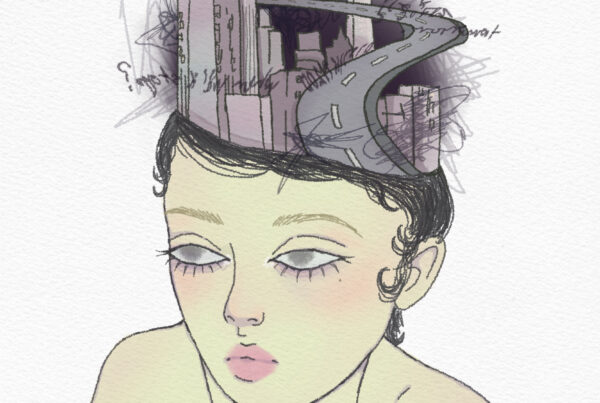
We can’t escape it; toxic masculinity surrounds us all. As a female writer, I wanted to explore men’s perspectives on the issue they both instigate and suffer from, ultimately giving them a platform to voice themselves. I urge you to delve into their reflections and find your opinion on masculinity. Whatever that may be, reflect on how your definition affects yourself and others.
We can’t escape it; toxic masculinity surrounds us all. As a female writer, I wanted to explore men’s perspectives on the issue they both instigate and suffer from, ultimately giving them a platform to voice themselves. I urge you to delve into their reflections and find your opinion on masculinity. Whatever that may be, reflect on how your definition affects yourself and others.

Photo by Pika Ivana Kostanjšek

Photo by Pika Ivana Kostanjšek
What is toxicity? A poison. Harmful behaviour. We all try to avoid it, but sometimes we can be blind to toxic behaviour, especially within ourselves. What if I told you that a type of toxicity surrounds us more abstractly? It exists in our families, friends, and cultures. These extreme traditional masculine norms have harmed men, women, LGBTQ, and ethnic groups. We all know it, toxic masculinity. But why is masculinity a toxic motive? Masculine norms are not harmful in themselves though even this is up for debate. Masculinity is toxic when men conform to extreme behaviours such as violence and self-reliance, causing detrimental effects for themselves and others. While most of society seems quite aware of this, I was curious about the insider perspective. Therefore, I explored the subject by interviewing men on toxic masculinity to see how they felt about the behaviours they both instigate and suffer from. With their individual differences and life experiences, each gave their personal account of the issue. I present to you the features of the interviews in hopes of opening the conversation between men to create awareness of hypermasculinity and hopefully pave a path for inclusive masculinity.
Initially, I wanted to know how they personally defined masculinity and how it differed from traditional masculine norms. Of course, there was not one single answer. First, they defined toxic masculinity as a false impression of manliness with a need to prove oneself. This image involved extreme behaviours, a sense of entitlement, and abuse of power. An impersonator would react violently to impose their dominance and respond aggressively to those who do not adhere to their expectations. The violent presumption sets the stage for bullying, misogyny, and homophobia. In addition, men are expected to emotionally suppress themselves, leading to a propensity for mental illness.
On the other hand, when the respondents gave their personal descriptions of masculinity, it drew a different picture. To them, masculinity represented leadership, taking action, and being virtuous. Men honour their strength and their vulnerabilities. More importantly, men dare to authentically be themselves. Though this did not resonate with everyone, there is no need to define masculinity or yourself. Just being is more than enough, be confident in yourself.
“Notably, men realise the obligation to emotional suppression at a young age when others feel uncomfortable or judge their expression.”
Next, I asked respondents how toxic masculinity materialised in their lives. The grey area between acceptable and unacceptable behaviour can derive from living in a culture that normalises harmful masculinity as the standard. The norm forces men to be emotionally unavailable and numb, which condemns mental health aid (Chatmon, 2020). Notably, men realise the obligation to emotional suppression at a young age when others feel uncomfortable or judge their expression. A surprising change occurred when the respondents moved to more international environments with diverse crowds. The men felt that their social environment was more mindful of toxic masculinity, and these effects rubbed off on them. Although these beliefs are implemented early in development, men can carry judgement about emotionality within themselves, which causes them to not talk about their mental health. The unwillingness to engage in the conversation means that men lack support, which can further exacerbate mental health issues. For some, this can be countered by having someone who embraces their emotion. It shows them to embrace their vulnerability, but they still must learn to appreciate it in others. Men must learn to feel and teach boys that having feelings is more than okay. Be confident in yourself and be true to your emotions. Be brave to be vulnerable.
Culture and religion both influence one another. Values, customs, and behaviours are frequently significantly influenced by religion. Remarkably, one respondent highlighted religion’s role in enforcing masculinity. Many religious institutions hypocritically use their morality to justify toxic masculinity. At the same token, homosexuality is punished whilst premarital sex is tolerable. Though the religious texts express that both are sins, the interpretation is biassed to support toxic masculinity. If one does not conform to social standards, then they are forsaken. Since culture also affects parenting practices, as it passes on the same values and beliefs. As the adherence to male norms surrounds us in our culture, religions, and families, it is difficult to not feel the pressure. As a result, the male role imposes a mould which limits the freedom to be yourself and the life you want to lead. To be a man is to be yourself.
“Traditional masculinity could push men to be their best version, but toxic masculinity can force them into a suffocating mould.”
Since cultural norms influence how people communicate and form connections, this pressure seeps into our social groups. Some respondents believed that traditional masculinity could have positive effects on friends. For instance, criticism between peers could lead to personal improvement. In this case, friends may comment on someone’s weight, and that person would turn to diet and exercise to change it, and with this, the person would gain self-confidence. Although, I want to highlight the thin line between negative criticism and constructive communication. Constant criticism would overwhelm someone, negatively affecting the person and, in extreme cases leading to body shaming and body dysmorphia. The social pressure for men to embody traditional masculinity causes stigmatisation towards anything that deviates from the masculine character or physical appearance. Traditional masculinity could push men to be their best version, but toxic masculinity can force them into a suffocating mould.
Finally, I closed by asking the respondents what they believed to be the solution for toxic masculinity. It’s a complex issue, and thus there’s no clear-cut answer. However, overall, they identified that the imprint happens during boys’ youth. Therefore, adults must stop enforcing violence and emotional suppression on children as they are vulnerable to these impressions. Following adolescence, boys are influenced by their peers. Toxic masculinity should also be addressed through education by having professionals educate both students and teachers. Violent socialisation between boys pressures others to respond with aggression, which should be detected by guardians. To discuss the issue, it should be made visible. Finally, adults should offer a secure environment where boys may develop their emotional intelligence.
But before all of this, it begins with yourself. It is a personal responsibility to unlearn toxic masculinity. First, choose for yourself, as the men who contributed to this article did, which male stereotypes are damaging. From there, try to be a person you would look up to. Mainly, we should put a stop to passing on these harmful masculine norms through generations. Finally, become conscious of how your behaviour may be mirroring these ideas. Remember that as long as toxic masculinity is prevalent in society, the process of developing awareness is continuous. <<
References
– Chatmon, B. N. (2020). Males and mental health stigma. American Journal of Men’s Health, 14(4), 155798832094932. https://doi.org/10.1177/1557988320949322
What is toxicity? A poison. Harmful behaviour. We all try to avoid it, but sometimes we can be blind to toxic behaviour, especially within ourselves. What if I told you that a type of toxicity surrounds us more abstractly? It exists in our families, friends, and cultures. These extreme traditional masculine norms have harmed men, women, LGBTQ, and ethnic groups. We all know it, toxic masculinity. But why is masculinity a toxic motive? Masculine norms are not harmful in themselves though even this is up for debate. Masculinity is toxic when men conform to extreme behaviours such as violence and self-reliance, causing detrimental effects for themselves and others. While most of society seems quite aware of this, I was curious about the insider perspective. Therefore, I explored the subject by interviewing men on toxic masculinity to see how they felt about the behaviours they both instigate and suffer from. With their individual differences and life experiences, each gave their personal account of the issue. I present to you the features of the interviews in hopes of opening the conversation between men to create awareness of hypermasculinity and hopefully pave a path for inclusive masculinity.
Initially, I wanted to know how they personally defined masculinity and how it differed from traditional masculine norms. Of course, there was not one single answer. First, they defined toxic masculinity as a false impression of manliness with a need to prove oneself. This image involved extreme behaviours, a sense of entitlement, and abuse of power. An impersonator would react violently to impose their dominance and respond aggressively to those who do not adhere to their expectations. The violent presumption sets the stage for bullying, misogyny, and homophobia. In addition, men are expected to emotionally suppress themselves, leading to a propensity for mental illness.
On the other hand, when the respondents gave their personal descriptions of masculinity, it drew a different picture. To them, masculinity represented leadership, taking action, and being virtuous. Men honour their strength and their vulnerabilities. More importantly, men dare to authentically be themselves. Though this did not resonate with everyone, there is no need to define masculinity or yourself. Just being is more than enough, be confident in yourself.
“Notably, men realise the obligation to emotional suppression at a young age when others feel uncomfortable or judge their expression.”
Next, I asked respondents how toxic masculinity materialised in their lives. The grey area between acceptable and unacceptable behaviour can derive from living in a culture that normalises harmful masculinity as the standard. The norm forces men to be emotionally unavailable and numb, which condemns mental health aid (Chatmon, 2020). Notably, men realise the obligation to emotional suppression at a young age when others feel uncomfortable or judge their expression. A surprising change occurred when the respondents moved to more international environments with diverse crowds. The men felt that their social environment was more mindful of toxic masculinity, and these effects rubbed off on them. Although these beliefs are implemented early in development, men can carry judgement about emotionality within themselves, which causes them to not talk about their mental health. The unwillingness to engage in the conversation means that men lack support, which can further exacerbate mental health issues. For some, this can be countered by having someone who embraces their emotion. It shows them to embrace their vulnerability, but they still must learn to appreciate it in others. Men must learn to feel and teach boys that having feelings is more than okay. Be confident in yourself and be true to your emotions. Be brave to be vulnerable.
Culture and religion both influence one another. Values, customs, and behaviours are frequently significantly influenced by religion. Remarkably, one respondent highlighted religion’s role in enforcing masculinity. Many religious institutions hypocritically use their morality to justify toxic masculinity. At the same token, homosexuality is punished whilst premarital sex is tolerable. Though the religious texts express that both are sins, the interpretation is biassed to support toxic masculinity. If one does not conform to social standards, then they are forsaken. Since culture also affects parenting practices, as it passes on the same values and beliefs. As the adherence to male norms surrounds us in our culture, religions, and families, it is difficult to not feel the pressure. As a result, the male role imposes a mould which limits the freedom to be yourself and the life you want to lead. To be a man is to be yourself.
“Traditional masculinity could push men to be their best version, but toxic masculinity can force them into a suffocating mould.”
Since cultural norms influence how people communicate and form connections, this pressure seeps into our social groups. Some respondents believed that traditional masculinity could have positive effects on friends. For instance, criticism between peers could lead to personal improvement. In this case, friends may comment on someone’s weight, and that person would turn to diet and exercise to change it, and with this, the person would gain self-confidence. Although, I want to highlight the thin line between negative criticism and constructive communication. Constant criticism would overwhelm someone, negatively affecting the person and, in extreme cases leading to body shaming and body dysmorphia. The social pressure for men to embody traditional masculinity causes stigmatisation towards anything that deviates from the masculine character or physical appearance. Traditional masculinity could push men to be their best version, but toxic masculinity can force them into a suffocating mould.
Finally, I closed by asking the respondents what they believed to be the solution for toxic masculinity. It’s a complex issue, and thus there’s no clear-cut answer. However, overall, they identified that the imprint happens during boys’ youth. Therefore, adults must stop enforcing violence and emotional suppression on children as they are vulnerable to these impressions. Following adolescence, boys are influenced by their peers. Toxic masculinity should also be addressed through education by having professionals educate both students and teachers. Violent socialisation between boys pressures others to respond with aggression, which should be detected by guardians. To discuss the issue, it should be made visible. Finally, adults should offer a secure environment where boys may develop their emotional intelligence.
But before all of this, it begins with yourself. It is a personal responsibility to unlearn toxic masculinity. First, choose for yourself, as the men who contributed to this article did, which male stereotypes are damaging. From there, try to be a person you would look up to. Mainly, we should put a stop to passing on these harmful masculine norms through generations. Finally, become conscious of how your behaviour may be mirroring these ideas. Remember that as long as toxic masculinity is prevalent in society, the process of developing awareness is continuous. <<



